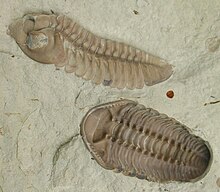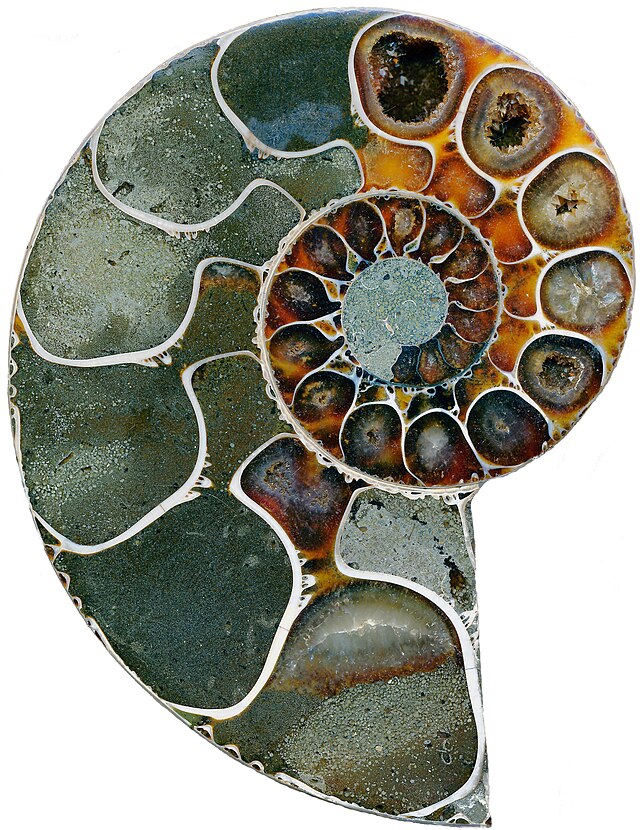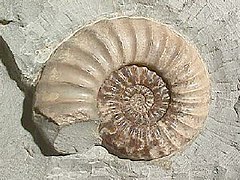| Fossil (word derived from the Latin word fossilis meaning "dug up" or "extracted from the earth") are the remains of living organisms or evidence of their biological activity preserved in various materials. This preservation occurs mainly in rocks, but can also occur in materials such as sediments, ice, tar, resins, soils and caves and the most cited examples are bones and fossilized stems, shells, eggs and footprints. Fossils provide important data regarding biological evolution, dating and reconstructing the geologic history of the Earth. |

|
Os fósseis (palavra derivado do termo latino fossilis que significa "desenterrado" ou "extraído da terra") são restos de seres vivos ou evidências de suas atividades biológicas preservados em diversos materiais. Essa preservação ocorre principalmente em rochas, mas pode ocorrer também em materiais como sedimentos, gelo, piche, resinas, solos e cavernas e os exemplos mais citados são ossos e caules fossilizados, conchas, ovos e pegadas. Os fósseis fornecem dados importantes quanto a evolução biológica, datação e reconstituição da história geológica da Terra. |
|
Ammonites are an extinct group of marine invertebrate animals in the subclass Ammonoidea of the class Cephalopoda. These molluscs are more closely related to living coleoids (i.e. octopuses, squid, and cuttlefish) than they are to shelled nautiloids such as the living Nautilus species. The earliest ammonites appear during the Devonian, and the last species died out during the Cretaceous–Paleogene extinction event.
Ammonites are excellent index fossils, and it is often possible to link the rock layer in which a particular species or genus is found to specific geological time periods. Their fossil shells usually take the form of planispirals, although there were some helically spiraled and nonspiraled forms (known as heteromorphs).
The name "ammonite", from which the scientific term is derived, was inspired by the spiral shape of their fossilized shells, which somewhat resemble tightly coiled rams' horns.
|


|
Amonites são um grupo extinto de animais invertebrados marinhos na subclasse Ammonoidea da classe dos Cefalópodes. Esses moluscos são mais estreitamente relacionados aos coleoidea vivos (ou seja, polvos, lulas e chocos) do que são para os nautiloids de casca tais como as espécies vivas de Nautilus. Os primeiros amonites apareceram durante o Devoniano, e as últimas espécies desapareceram durante o evento de extinção Cretáceo-Paleogeno.
Amonites são excelentes fósseis de índice, e muitas vezes é possível ligar a camada de rocha em que uma espécie ou gênero específico é encontrado a períodos específicos de tempo geológico. As suas conchas fósseis geralmente tomam a forma de planispirals, embora houvesse algumas formas de hélice em espiral e não espiral (conhecidos como heteromorphs).
O nome "amonite", a partir do qual o termo científico é derivado, foi inspirado pela forma espiral de suas conchas fossilizadas, que se assemelham fortemente chifre de carneiro enrolado.
|